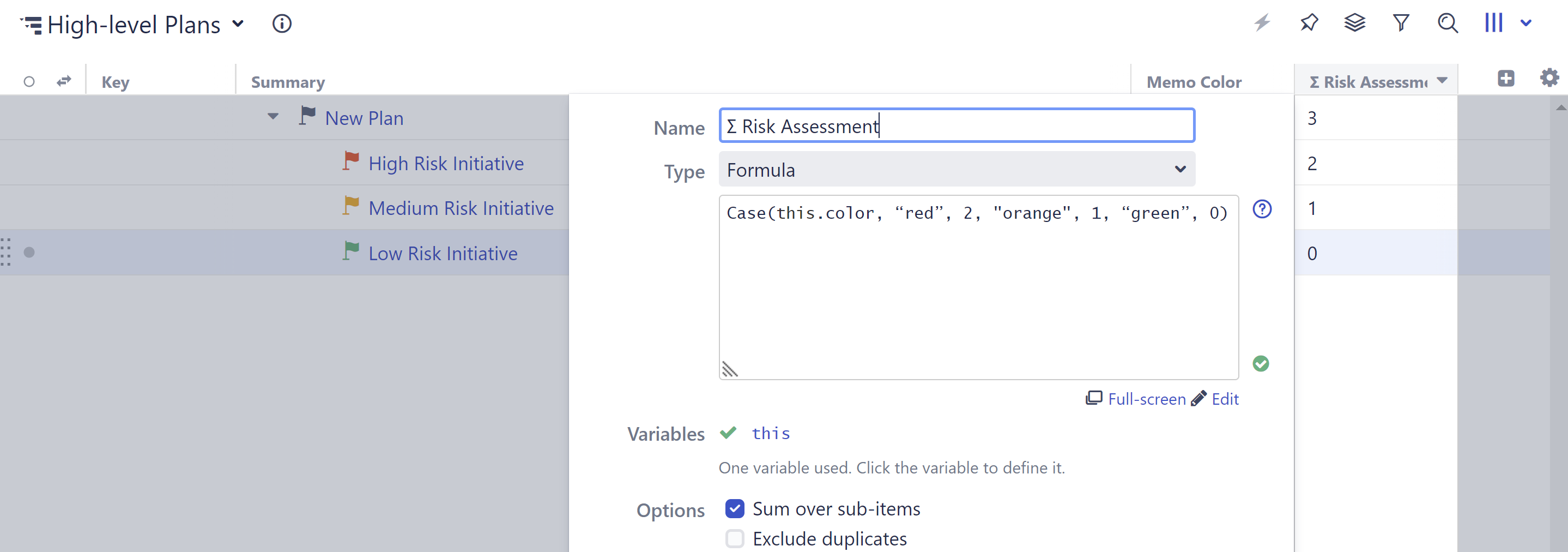Structure 8.0 Release Notes
30th of March 2022
Structure 8.0 introduces text wrappingDownload the latest version of Structure and its Extensions
Try It: Structure Sandbox Server (no installation required)
1. Version Highlights
- Text wrapping
- Memo attributes in formulas
- Change a view owner
2. Changes in Detail
2.1. Text Wrapping
See even more details about an issue at a glance! Text Wrapping expands each row to the height of the longest cell, so you can easily read longer text fields without opening the issue.

This was the #1 most requested feature on our Uservoice channel - thank you to everyone who voted for it and please keep your feedback coming!
Documentation: Text Wrapping
2.2. Memo Attributes in Formulas
Memo's just got even more useful! You can now use a memo's color, description, and title as formula variables.
- Use memo colors to identify risk levels in your planning stage, and then quickly aggregate risk across the structure.
- Add key words to a memo's title or description, and narrow your formula results based on those.
- Group issues under memos, and create different calculation rules based on the memo values.

You can can reference a memo's color, description, or title using the following formats:
- this.color
- this.description
- this.title
Documenation: Memo
2.3. Structure Description
When you open a structure for the first time, its description is shown at the top of the Structure panel. This can be extremely useful when sharing a structure with someone else, as they can quickly see what its purpose is.

To close the description, or open it again, simply click the info button beside the structure's name
2.4. Additional Improvements
- Ability to change the owner of a view
- Enable Manual Adjustments by default
3. Supported Versions
Structure 8.0 and all its extensions support Jira versions 8.13 or later. This release is for customers using Jira Server or Data Center (Jira Core, Jira Software, or Jira Service Management/Service Desk).
Compatible with:
- Structure.Gantt 3.0+
- Structure.Pages 1.6+
- Structure.Testy 2.6+
Cloud customers can learn more about our products on the “Cloud” tab of our marketplace listing.
4. Installation and Upgrade
Pick a Time
We strongly recommend that you install and upgrade your apps during off-peak hours or scheduled maintenance windows. There are known issues in the Jira app infrastructure that may cause performance degradation and impede app installation when your Jira instance is under heavy load.
4.1. Installing Structure
If your Jira server does not have Structure yet, the installation is simple:
- Download and install Structure app, either from the Atlassian Marketplace or our Download page.
- When Add-on Manager reports the successful installation, click Get Started to visit a page with important guidance for the Jira administrator. You may want to also check out the user's Get Started page, available under the "Structure" top-level menu.
- Monitor
catalina.outorjira-application.logfor log messages from Structure.
4.2. Upgrading Structure
The upgrade procedure from versions 3.0–7.4 is simple:
- Consider backing up Jira data. Use Administration | System | Backup System. (If you have a large instance and a proper backup strategy in place, you may skip this step.)
- Back up Structure data. Use Administration | Structure | Backup Structure menu item. If you have a lot of structures and a large Jira, consider turning off the "Backup History" option to avoid a long backup process.
Install the new version of the app.
- Monitor
catalina.outorjira-application.logfor warnings or errors.
5. Enterprise Deployment Notes
Several changes were made in this release to improve application stability.
5.1. Item Tracker Data Cleanup
We implemented a new maintenance task called "Clear item events table" to clean up cluster item events in Jira DC. We highly recommend this task be applied on instances where node renaming or new node addition is a frequent operation. The task can be scheduled periodically or run manually after a node operation. This task will remove all event information from Structure database tables to avoid event ID overflow. All used structures are recalculated as a side effect of this maintenance task, so it is highly recommended to run it in nonworking hours.
5.2. Attributes Loading Cache Limitations
In the Structure 7.4 release we introduced attribute calculation performance improvements through more efficient cache usage. Unfortunately, there was a mistake with the cache limit that can potentially cause OutOfMemoryError on exotic attribute configurations. This release fixes the cache limit. This may cause a slowdown in attributes calculation (aggregates or export). If you experience a problem, there is a dark feature that allows you to adjust the cache size for your instance to a reasonable limit (please contact Tempo Support for help).
5.3. Structure Gadget in Confluence Stability Fix
We introduced a fix to the Confluence gadget when using Jira DC, so that some Structure attributes now have to be calculated by forest specification w/o filters (for instance, Sequential Index). If you use such attributes in a gadget with filters, it can cause an ArrayIndexOutOfBoundsException on the server side when the gadget reconnects to a different Jira node. The change fixes this problem.
5.4. Testing on Staging Environment
Apart from the changes and suggestions above, along with the usual testing procedures you've done for previous upgrades, we advise comparing attribute load times against Structure 7.4 for huge structures with aggregate attribute columns, if you use any. We also advise comparing export (Printable or Excel) for huge structures against Structure 7.4, if you use any.